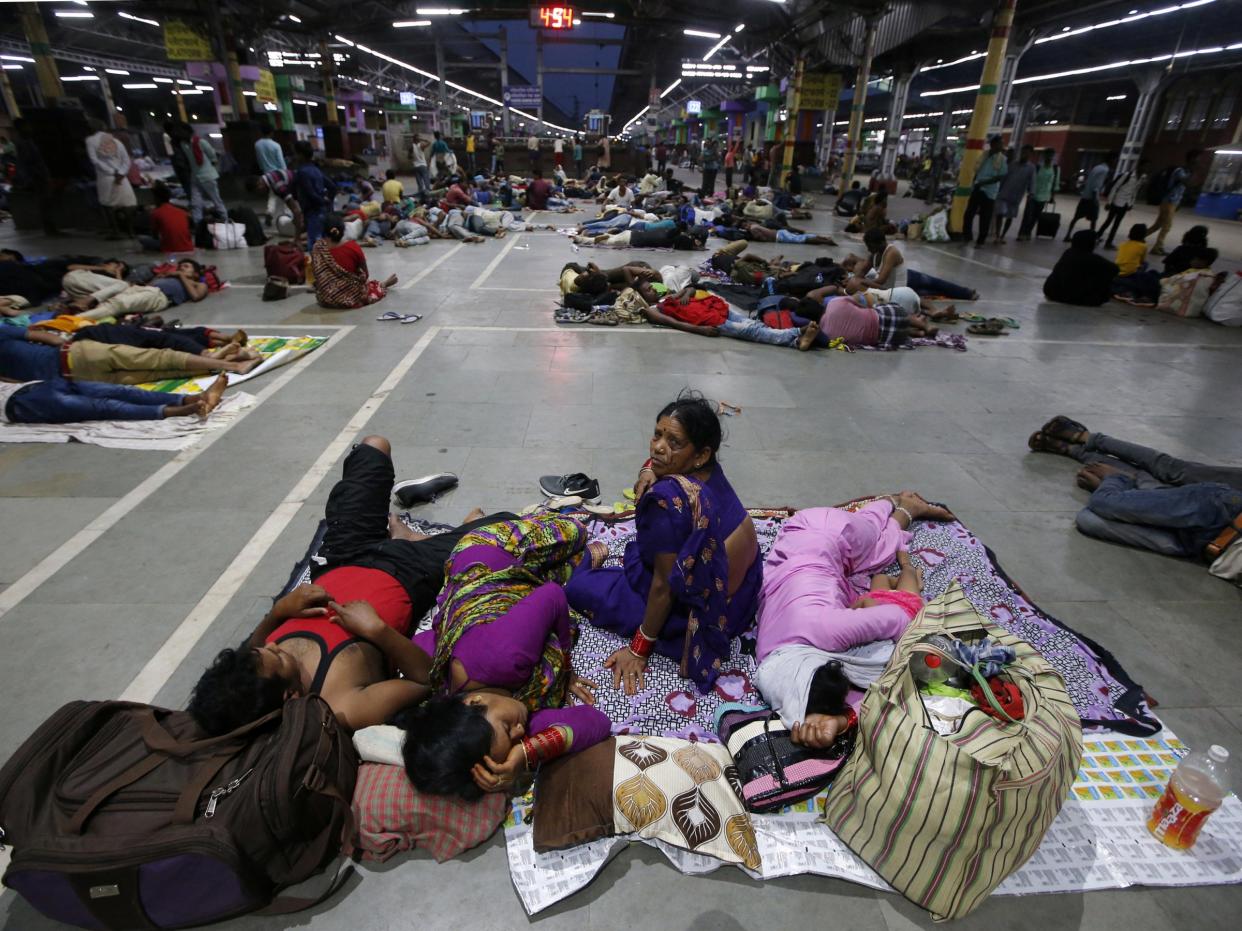Climate disasters have already displaced 7 million people this year, nearly twice as many as conflict — here are the countries hit hardest

REUTERS/Rupak De Chowdhuri
Seven million people were displaced between January and June of this year due to climate and weather crises.
That's nearly double the number of people (3.8 million) who were displaced by violence in the same period.
People in India and Bangladesh have been especially affected by climate-related disasters this year.
This year has already been a record-breaker for weather-related highs: July was the hottest month ever recorded globally, Australia shattered its record for the hottest summer ever, and Angola experienced the world's warmest recorded February temperature.
According to a report by the Internal Displacement Monitoring Center, which compiles data on diaspora from governments, the United Nations, and media reports, a record number of disasters displaced people from their homes and communities in the first half of 2019.
More than 950 natural disasters plagued 102 different countries and territories in the first six months of 2019, the report says, including monsoons, cyclones, and landslides.
The authors estimate that 7 million people were displaced by climate disasters between January and June of this year, the highest mid-year total of displacements associated with disasters ever recorded by the group. That's nearly double the total number of people (3.8 million) displaced by violence in the same period.
India and Bangladesh were hit especially hard, with over a million people, respectively, forced to evacuate due to a natural disaster or climate event.
The report gives some reason for optimism. In situations like Cyclone Fani, for example, one of the strongest storms to hit the Indian subcontinent in nearly two decades, governments were able to take early action to protect and evacuate communities.
Here are the climate-related disasters that caused the most displacement during the first half of 2019.
Cyclone Fani forced over 3.4 million displacements, nearly half of the total for the first half of 2019, when it ripped through India and Bangladesh in May.

PLAN India/Reuters
Fani was the strongest tropical storm to hit the region of Odisha since 1999, when the Odisha Cyclone killed over 15,000 people.
Following that disaster, the Odisha State Disaster Management Authority was established so that thousands of shelters would be ready if another massive storm were to hit. It worked — the high number of people who evacuated ahead of the storm lead to a significantly lower death toll of 89.
Cyclone Idai hit Mozambique, Malawi, Zimbabwe, and Madagascar in March and killed more than 1,000 people.

REUTERS/Mike Hutchings
Cyclone Idai was the deadliest storm ever to hit the southwest Indian Ocean basin. It was also responsible for the second-highest number of displacements in the first half of 2019: 617,000.
Nearly half a million of those displaced people were in Mozambique — homes in and around the coastal town of Beria sustained extensive damage.
Flooding in Iran displaced half a million people in the spring.

Tasnim News Agency/via REUTERS
Iran saw some of the worst flooding it has experienced in two decades during the spring. The floods impacted 90% of the country and caused more than $2.5 billion in damages.
Heavy and continuous rainfall caused landslides and flooding across various regions in the Philippines, displacing nearly 300,000 people.

AP Photo/Froilan Gallardo
The rains came between January 26 and 30 and primarily impacted the city of Davao.
Flash flooding between January 22 and February 3, caused by tropical depression Amang, led to an additional 106,000 new displacements in the Davao.
Nearly 300,000 people were displaced from coastal areas of the state of Gujarat in India in preparation for Cyclone Vayu, a Category 3 storm, in June.

REUTERS/Amit Dave
The storm wound up shifting west and only caused category 1 level impacts for the region, significantly less than the category 3 results expected. Dry air and wind shear prevented new thunderstorms from forming, according to NASA, preventing the most damaging storm impacts from hitting the ground.
Heavy rains and flooding caused over 190,000 displacements across 38 districts of Ethiopia this May and early June.

AP Photo/Rebecca Blackwell
Ethiopia has extremely variant weather, with some areas prone to drought and others that see frequent flooding. Southern Nations, Nationalities and People's, one of the most impacted areas of Ethiopia most impacted by the flooding, also struggles with diaspora due to violence. Across all of Ethiopia, over 500,000 people had to leave their home due to humanitarian crises.
On June 17, a 6.0 magnitude earthquake struck Sichuan, China, displacing 80,000 people.

AP Photo/Ng Han Guan
This year's earthquake killed 13 people and injured 199. Over 110,000 homes were damaged.
Floods and landslides in the first four months of the year caused around 75,000 displacements in Bolivia.

REUTERS/David Mercado
The flooding was spurred by heavy rainfall due to El Niño that caused rivers to swell. The Bolivian government declared the flooding a national emergency on February 27.
Across South America, floods in the Amazon and Rio de la Plata basins displaced hundreds of thousands of people across Argentina, Bolivia, Brazil, Paraguay, and Uruguay.
In Somalia, another 72,000 people were displaced in the first six months of this year because of a drought that has plagued the country since 2015.

AP Photo/Farah Abdi Warsameh
This isn't the first year that Ethiopia has struggled with drought. The East Africa drought started noticeably impacting Ethiopia in 2015, the report states.
The number of displacements in 2019 is actually low compared to previous years. Many of the million-plus people who fled in 2016 and 2017 have struggled to find stability after evacuating.

